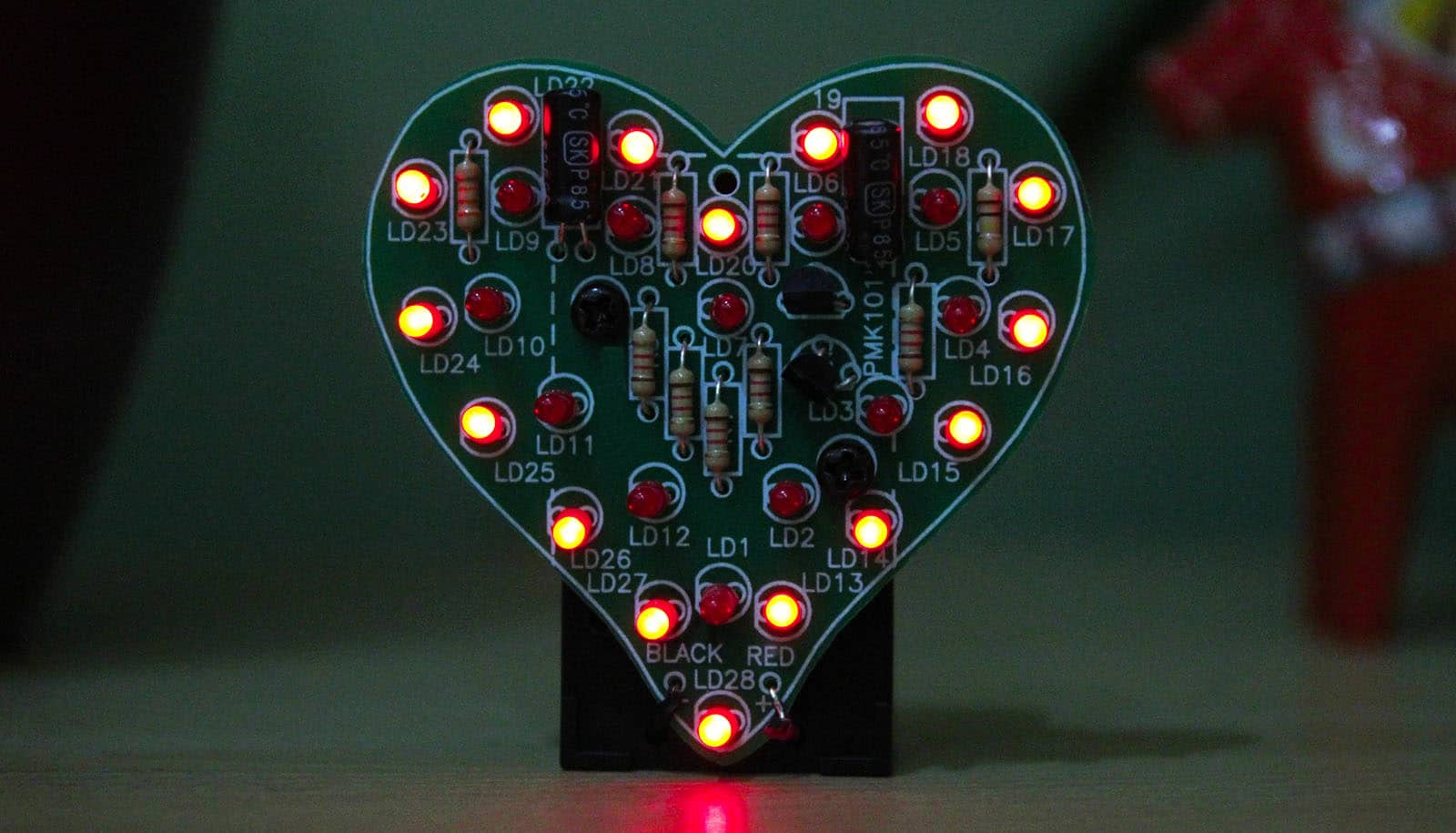A form of light therapy called photobiomodulation may delay the occurrence of age-related diseases, like heart deterioration, a study with mice shows.
Almost 20% of Americans older than 65 have been diagnosed with heart disease, and heart disease continues to be the leading cause of death in the United States.
“The idea was to see if intervention in middle age could enable people to avoid further age-related heart deterioration,” says Praveen Arany, associate professor of oral biology in the University at Buffalo School of Dental Medicine.
The study focused on heart condition and function in middle-aged mice, 14 months of age. The research showed an improvement in heart function after exposure to photobiomodulation (PBM) therapy. PBM also mitigated the thickness of the cardiac wall.
“As muscle thickens, it becomes stiffer, and the pumping action of the heart is less effective,” says Arany. Gait symmetry—observing how mice performed comfortably on a treadmill—also improved, suggesting an improvement in neuromuscular coordination.
The experiment exposed mice to a dose of near-infrared light by using an overhead LED light source rather than a focused light source. The ambient low-dose exposure took place five days a week for two minutes each day.
One group of the genetically manipulated mice gets severe heart disease, which usually causes death. After treatment with PBM, heart disease among these mice with heart disease did not progress. The survival rate among the most susceptible group was 100%, compared to the usual survival rate of 43%. The results were significant even though the eight-month study was interrupted for three months by COVID-19.
Arany began his professional career as a dentist. “After a tooth extraction, we have to wait for the wound to heal before we can proceed with treatment,” he says. “I became interested in how to improve and hasten healing.” He soon learned that exposing the wound to light promoted healing, and his interest in light therapy began.
How does PBM work? The study showed that the production of a substance called transforming growth factor beta (TGF-β1) correlated to exposure to PBM, suggesting that PBM triggers the activation of TGF-β1.
The substance plays an important role in human health and disease, especially in age-related diseases. Arany says that TGF-β1 regulates stem cell activity, inflammation, and immune system function that may partly explain why light therapy works.
Light therapy is only effective if it is administered with appropriate parameters. To be effective and safe, it is important to use specific light wavelength (color), intensity (dose), and length of exposure. Certain kinds of light, such as ultraviolet light and light produced by lasers, can be harmful.
Other lights, while harmless, may not be effective. This study shows that long-term exposure to a low-dose near-infrared light in a non-thermal manner, carefully adjusted, may benefit heart health and longevity. The next step, Arany says, is controlled human clinical trials.
The study appears in the journal Lasers in Surgery and Medicine. The Intramural Research Program of the NIH National Institute on Aging funded the work.
Source: Mary Durlak for University at Buffalo



